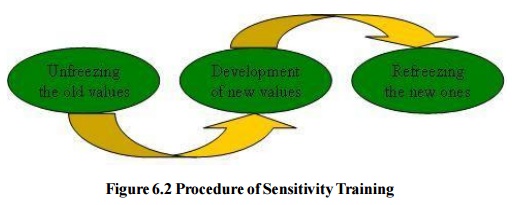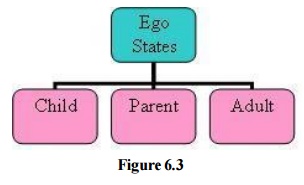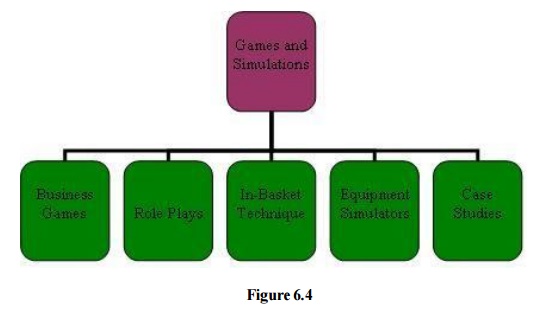Chapter: Mechanical : Human Resource Management(HRM) : Training And Executive Development
Off the Job Training
OFF THE JOB TRAINING
There are many management development techniques
that an employee can take in off the job. The few popular methods are:
1.SENSITIVITY TRAINING
2.TRANSACTIONAL ANALYSIS
3.STRAIGHT LECTURES/ LECTURES
4.SIMULATION EXERCISES
1.) Sensitivity Training is
about making people understand about themselves and others reasonably, which
is done by developing in them social sensitivity and behavioral flexibility.
Social sensitivity in one word is empathy. It is
ability of an individual to sense what others feeland think from their own
point of view. Behavioral flexibility is ability to behave suitably in light of
understanding.
Sensitivity
Training Program requires three steps:
Unfreezing
the Old Values –
It requires that the trainees become aware of the
inadequacy of the old values. This can be done when the trainee faces dilemma
in which his old values is not able to provide proper guidance. The first
stepconsists of a small procedure:
An unstructured group of 10-15 people is formed.
Unstructured group without any objective looks to
the trainer for its guidance But the trainer refuses to provide guidance and
assume leadership
Soon, the trainees are motivated to resolve the
uncertainty
Then, they try to form some hierarchy.
Some try assume leadership role which may not be liked by other trainees
Then,
they started realizing that what they desire to do and realize the alternative
ways of dealing with the situation

Figure
6.2 Procedure of Sensitivity Training
Development
of New Values –With the trainer‘ssupport, trainees
begin to examine their interpersonal behavior and giving each other
feedback. The reasoning of the feedbacks are discussed which motivates trainees
to experiment with range of new behaviors and values. This process constitutes
the second step in the change process of the development of these values.
Refreezing the new ones –This
step depends upon how much opportunity the trainees get to practice their
new behaviors and values at their work place.
2.) Transactional Analysis provides
trainees with a realistic and useful method for analyzing and understanding
the behavior of others. In every social interaction, there is a motivation
provided by one person and a reaction to that motivation given by another
person. This motivation reaction relationship between two persons is a
transaction.
Transactional analysis can
be done by the ego states of an individual. An ego state is a system of feelings
accompanied by a related set of behaviors. There are basically three ego
states:
Child: It
is a collection of recordings in the brain of an individual of behaviors,
attitudes, and impulses which come to her naturally from her own
understanding as a child. The characteristics of this ego are to be
spontaneous, intense, unconfident, reliant, probing, anxious, etc. Verbal clues
that a person is operating from its child state are the use of words like ―Iguess‖,―Isuppose‖,tc.
and non verbal clues like, giggling, coyness, silent, attention seeking etc.
Parent:
It
is a collection of recordings in the brain of an individual of behaviors,
attitudes, and impulses imposed on her in her childhood from various sources
such as, social, parents, friends, etc. The characteristics of this ego are to
be overprotective, isolated, rigid, bossy, etc. Verbal clues that a person is
operating from its parent states are the use of words like, always, should,
never, etc and non-verbal clues such as, raising eyebrows, pointing an accusing
finger at somebody, etc.

Adult: It
is a collection of reality testing, rational behavior, decision making, etc. A
person in this ego state verifies, updates the data which she has
received from the other two states. It is a shift from the taught and felt
concepts to tested concepts. All of us evoke behavior from one ego state which
is responded to by the other person from any of these three states.
3.) Lecture is
telling someone about something. Lecture is given to enhance the knowledge of
listener or to give him the theoretical aspect of a topic. Training is
basically incomplete without lecture. When the trainer begins the training
session by telling the aim, goal, agenda, processes, or methods that will be
used in training that means the trainer is using the lecture method. It is
difficult to imagine trainingwithout lecture format. There are some variations
in Lecture method. The variation here means that some forms of lectures are
interactive while some are not.
Straight Lecture: Straight
lecture method consists of presenting information, which the trainee attempts
to absorb. In this method, the trainer speaks to a group about a topic.
However, it does not involve any kind of interaction between the trainer and
the trainees. A lecture may also take the form of printed text, such as books,
notes, etc. The difference between the straight lecture and the printed
material is the trainer‘sintonation, control of speed, body language, and
visual image of the trainer. The trainer in case of straight lecture can decide
to vary from the training script, based on the signals from the trainees,
whereas same material in print is restricted to what is printed. A good lecture
consists of introduction of the topic, purpose of the lecture, and priorities
and preferences of the order in which the topic will be covered. Some of the
main features of lecture method are:
Inability to identify and correct
misunderstandings Less expensive
Can be reached large number of people at once
Knowledge building exercise
Less effective because lectures require long periods
of trainee inactivity
4.) Games and Simulations are
structured and sometimes unstructured, that are usually played for enjoyment
sometimes are used for training purposes as an educational tool. Training games
and simulations are different from work as they are designed to reproduce or
simulate events, circumstances, processes that take place in trainees‘job.
A Training Game is defined as spirited activity or
exercise in which trainees compete with each other according to the defined set
of rules. Simulation is creating computer versions of real-life games.
Simulation is about imitating or making judgment or opining how events might
occur in a real situation. It can entail intricate numerical modeling, role
playing without the support of technology, or combinations. Training games and
simulations are now seen as an effective tool for training because its key
components are:
Challenge Rules
Interactivity
These three components are quite essential when it
comes to learning. Some of the examples of this technique are:

Trainees can therefore experience these events,
processes, games in a controlled setting where they can develop knowledge,
skills, and attitudes or can find out concepts that will improve their
performance. The various methods that come under Games and Simulations are:
BEHAVIOR-MODELLING BUSINESS GAMES
CASE STUDIES
EQUIPMENT STIMULATORS IN-BASKET TECHNIQUE
ROLE PLAYS
Related Topics